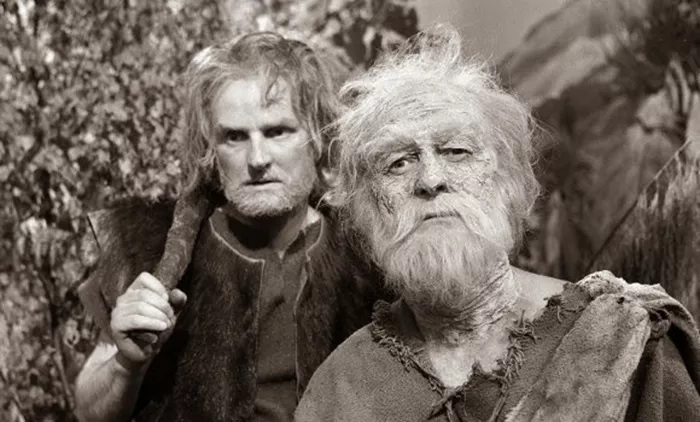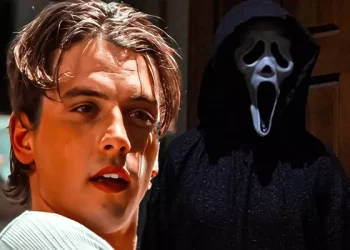In the realm of cinema, the question of violence often takes center stage, sparking discussions about artistic expression, societal impact, and audience reception. One film that has stirred such inquiries is “The Savages.” Released to critical acclaim, this cinematic work explores the complexities of human relationships, raising the question: Is the movie “The Savages” violent? In this article, we delve into the film’s narrative, visual elements, and thematic nuances to decipher the true nature of its portrayal of violence.
Understanding “The Savages”: A Cinematic Odyssey
Before delving into the contentious issue of violence, it is crucial to provide a comprehensive overview of “The Savages.” Directed by Tamara Jenkins and released in 2007, the film revolves around the lives of siblings Jon and Wendy Savage, portrayed by Philip Seymour Hoffman and Laura Linney, respectively. The narrative unfolds as they are forced to confront their estranged and ailing father, played by Philip Bosco. The movie is renowned for its poignant exploration of family dynamics, aging, and the pursuit of personal identity.
Is the movie “The Savages” violent in its portrayal of familial relationships? The answer lies in the nuanced storytelling that navigates the intricate web of emotions and connections. Rather than relying on overt physical aggression, the film employs subtlety and emotional depth to depict the challenges inherent in familial bonds. It is a portrayal that emphasizes the psychological and emotional toll of family dynamics, steering clear of gratuitous violence.
The Visual Language of “The Savages”: Aesthetic Choices
In any cinematic analysis, the visual language plays a pivotal role in conveying emotions, themes, and, in the case of this discussion, the potential for violence. Is the movie “The Savages” violent in its visual portrayal? Tamara Jenkins, in collaboration with cinematographer Mott Hupfel, employs a visual style that mirrors the film’s nuanced storytelling. The cinematography utilizes intimate close-ups and carefully framed shots to capture the characters’ emotional states.
The absence of overt violence in the visual narrative of “The Savages” is notable. Instead, the film relies on the power of facial expressions, body language, and spatial dynamics to convey tension and conflict. This deliberate choice serves to heighten the emotional impact, allowing the audience to engage with the characters on a deeper, more personal level. The absence of explicit violence in the visual composition suggests a focus on the internal struggles of the characters rather than external confrontations.
Unpacking Emotional Violence: A Subtle Undercurrent
While the absence of physical violence in “The Savages” is evident, the film does not shy away from exploring emotional violence. Is the movie “The Savages” violent in its depiction of emotional turmoil? The answer lies in the emotionally charged interactions between the characters, particularly within the familial context. The film delves into the intricacies of sibling relationships, the challenges of caregiving, and the inevitable confrontation with mortality.
The emotional violence portrayed in the film is rooted in the characters’ internal conflicts and the consequences of unresolved familial issues. Through poignant dialogues and subtle gestures, the audience witnesses the psychological toll that familial obligations can exact. This emotional violence, while not physically manifested, is equally potent, leaving a lasting impression on the viewer’s psyche.
Navigating Moral Ambiguity: Shades of Gray in “The Savages”
As we continue to explore the question – is the movie “The Savages” violent? – it becomes imperative to address the moral ambiguity embedded in the film’s narrative. The characters grapple with complex ethical dilemmas, raising questions about personal responsibility, sacrifice, and the blurred lines between right and wrong.
The moral quandaries faced by the characters contribute to the film’s overall tone of introspection and self-discovery. The absence of clear-cut heroes or villains adds layers of complexity to the storytelling. The exploration of moral ambiguity allows the audience to reflect on their own values and judgments, transcending the traditional boundaries of good and evil often associated with violent portrayals in cinema.
The Impact of Context: Violence as a Catalyst for Change
To fully comprehend the question at hand – is the movie “The Savages” violent? – it is essential to consider the broader context within which the film unfolds. Violence, in its various forms, serves as a catalyst for character development and narrative progression. The film strategically uses moments of tension and conflict to propel the characters towards self-discovery and growth.
The contextualization of violence in “The Savages” emphasizes its role as a narrative device rather than a gratuitous spectacle. The film invites the audience to reflect on the transformative power of adversity, urging them to consider the ways in which challenges, even those devoid of physical violence, can shape and redefine individuals and their relationships.
See Also: What is the Movie “The Savages” About?
Challenging Genre Conventions: Subverting Expectations
In the realm of cinematic genres, certain expectations often accompany films labeled as dramas or family narratives. Is the movie “The Savages” violent within the context of genre conventions? Tamara Jenkins, through her directorial choices, challenges and subverts these expectations, offering a narrative that transcends the limitations of genre categorization.
Rather than conforming to the traditional tropes associated with family dramas, “The Savages” embraces a more nuanced and unconventional approach. The film’s refusal to rely on predictable plot devices or sensationalized violence positions it as a thought-provoking exploration of the human experience. This departure from genre conventions further emphasizes the film’s commitment to authenticity and realism in portraying complex interpersonal dynamics.
The Aftermath of Conflict: Resilience and Redemption
As we approach the conclusion of our exploration – is the movie “The Savages” violent? – it is crucial to examine the aftermath of conflict within the narrative. The film, despite its exploration of emotional and moral complexities, ultimately offers a glimpse into the potential for resilience and redemption within familial relationships.
The characters’ journey through adversity, emotional turbulence, and moral dilemmas culminates in moments of self-discovery and growth. The film suggests that, while violence, whether emotional or physical, may be an inherent part of the human experience, it does not define individuals or relationships. Instead, “The Savages” proposes that redemption and resilience can emerge from the ashes of conflict, offering a hopeful and optimistic outlook on the transformative nature of human connections.
Conclusion: Deciphering the Cinematic Tapestry
In conclusion, the question – is the movie “The Savages” violent? – invites a nuanced examination of the film’s narrative, visual language, emotional nuances, moral complexities, and genre-defying approach. Tamara Jenkins crafts a cinematic masterpiece that transcends the boundaries of traditional family dramas, opting for a more profound exploration of the human condition.
The absence of overt physical violence in “The Savages” does not diminish its potency. Instead, the film relies on the subtle interplay of emotions, familial dynamics, and moral ambiguity to create a compelling narrative that resonates with audiences on a profound level. By challenging genre conventions and embracing authenticity, “The Savages” stands as a testament to the power of cinema to provoke thought, elicit emotional responses, and unravel the complexities of the human experience.
























